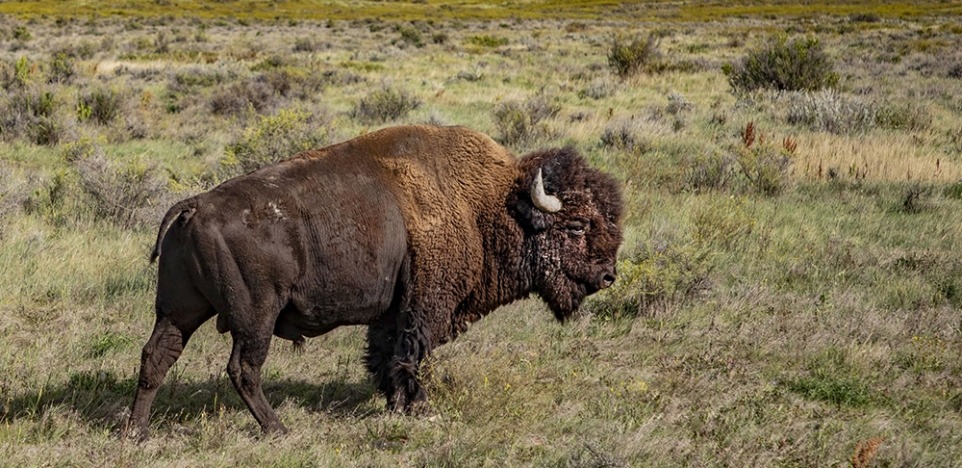They inhabited the land for thousands of years, living alongside indigenous tribes who treated them with reverence. In 1880, 30 million buffalo roamed the Great Plains. In the first part of this series, we hear from Native people, including the Kiowa, Comanche, and Cheyenne of the Southern Plains; the Lakota, Salish, Kootenai, Mandan-Hidatsa, and Blackfeet from the Northern Plains; and others. They explain how when a buffalo was killed, every part of the animal was used for food, clothing, or to make tools.
Then as white men swarmed over the lands, everything changed. Documentarian Ken Burns shows how greed, dishonesty, and violence led to the near extinction of this iconic animal. Wagon trains and then the transcontinental railroad rained gunfire on the herds. Taking their heads as trophies, the hunters left the rest of the animals’ bodies on the land to rot.
The second part of this shocking saga shows how such cultural events as Buffalo Bill’s Wild West Show increased the public’s fascination with the buffalo. It also chronicles how a few bold and courageous men and women worked to save the surviving herds. They included Theodore Roosevelt, the legendary Texas cattleman Charles Goodnight, and Latatí and Michel Pablo on the Flathead reservation in Montana. Charles Jesse “Buffalo” Jones, a mercenary hunter who took part in the final slaughter of millions of buffalo, turned to rescuing motherless calves and started a small herd that would eventually provide seed stock for others. These heroes pulled the species back from the precipice of extinction. Their story is as remarkable as that of the buffalo hunters.
